Donal Sturt | I do do it.
Sarabande Foundation, London, 18 - 21 October 2019
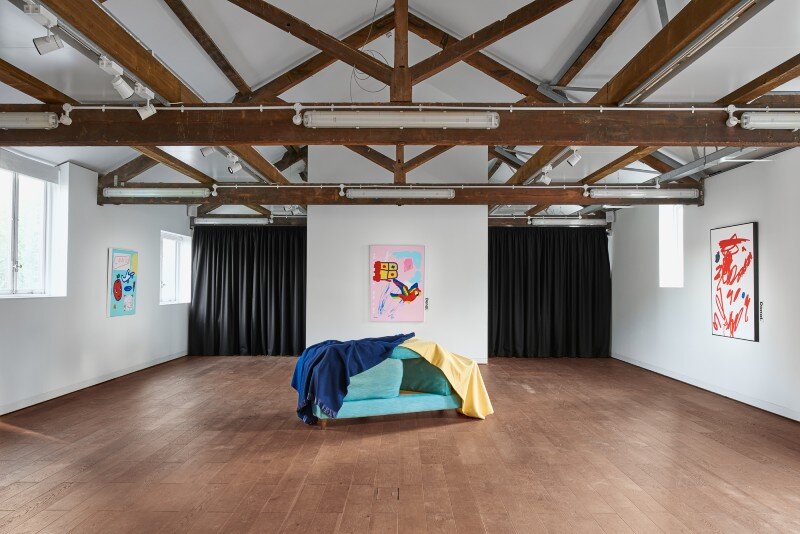
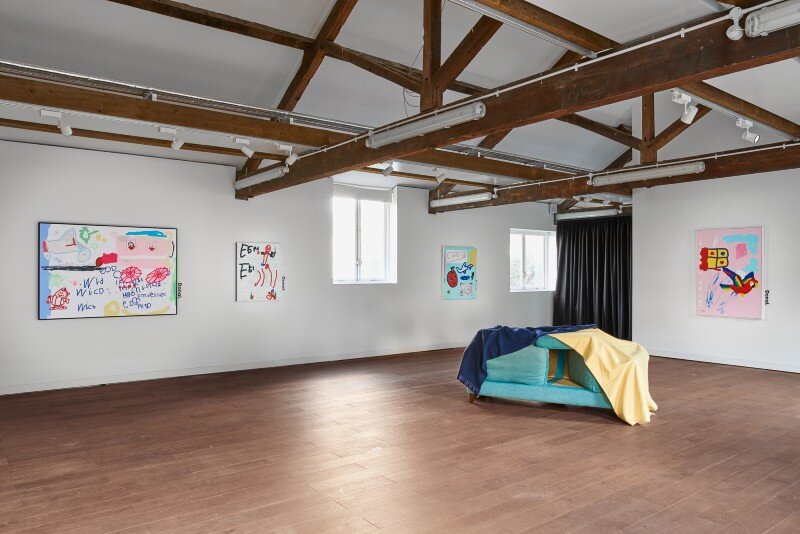
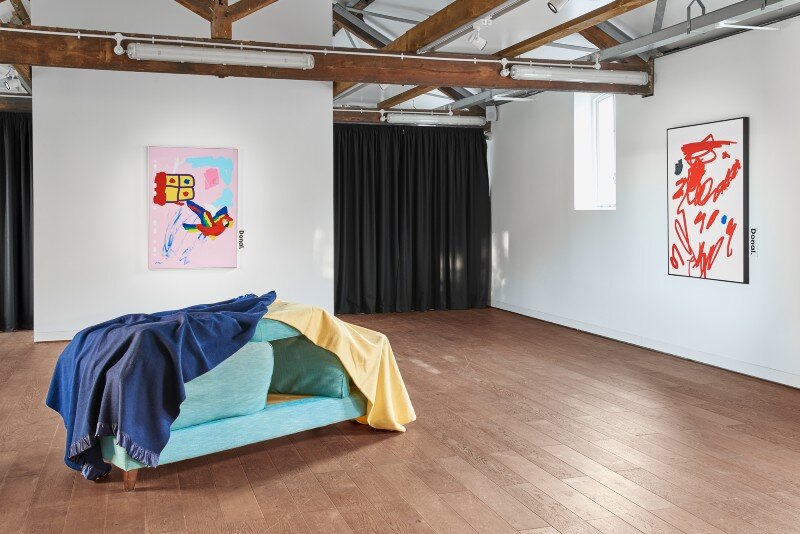
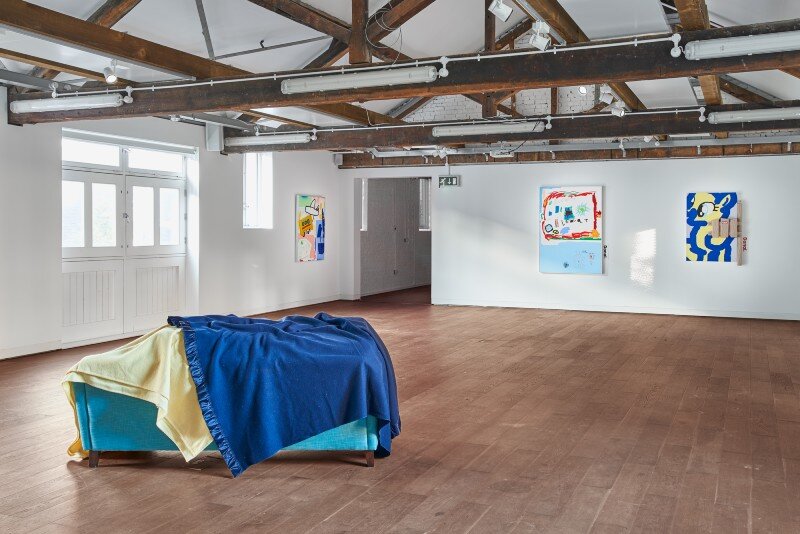
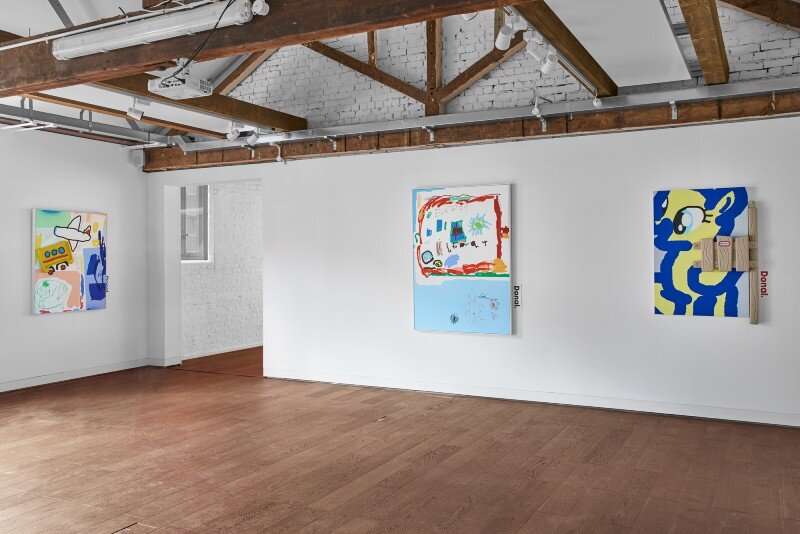
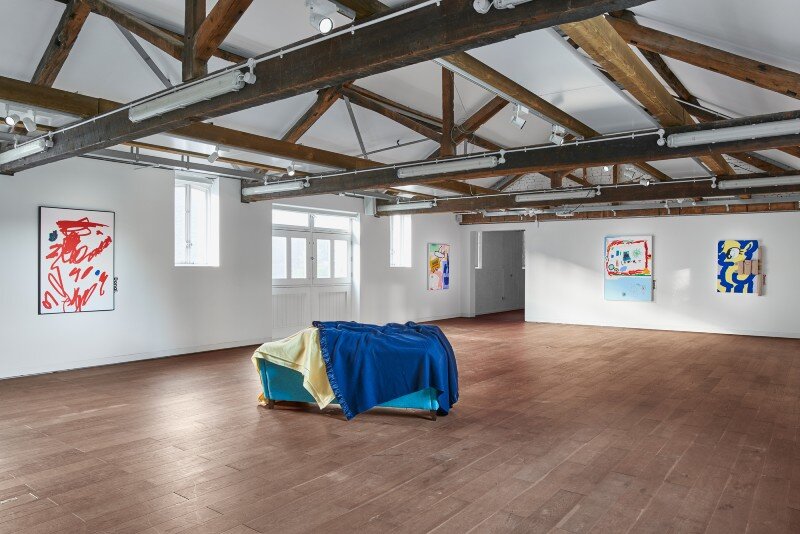
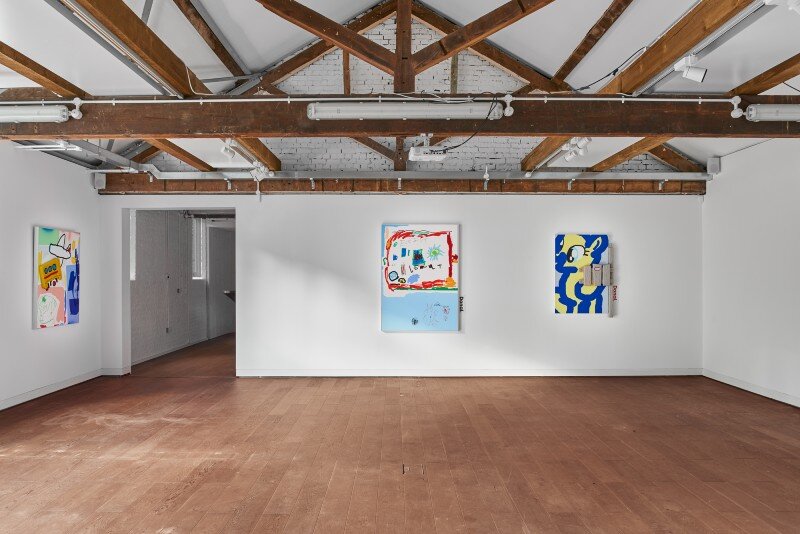
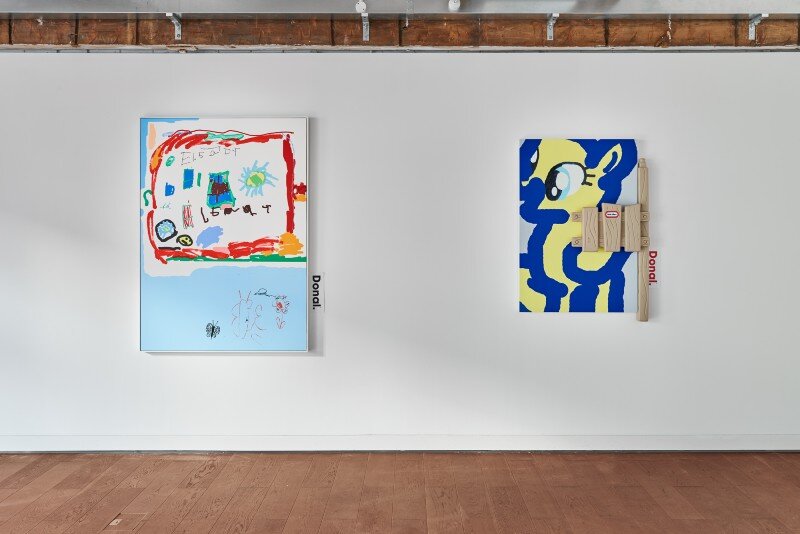
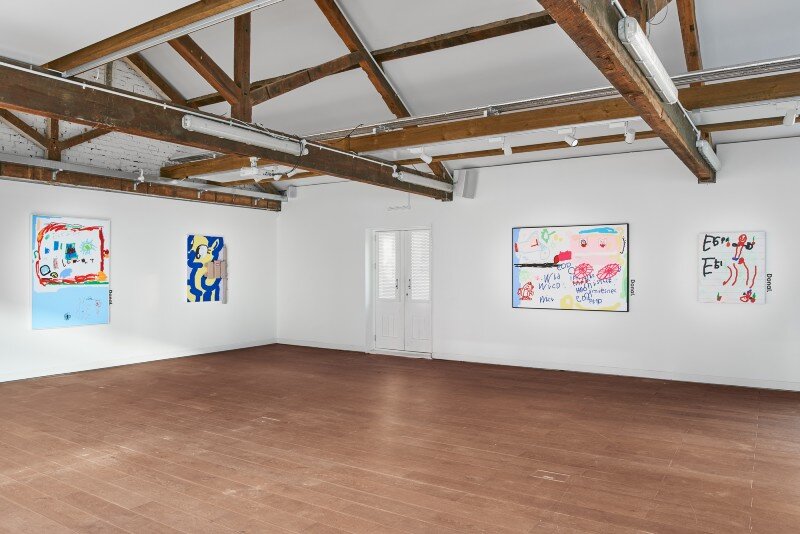
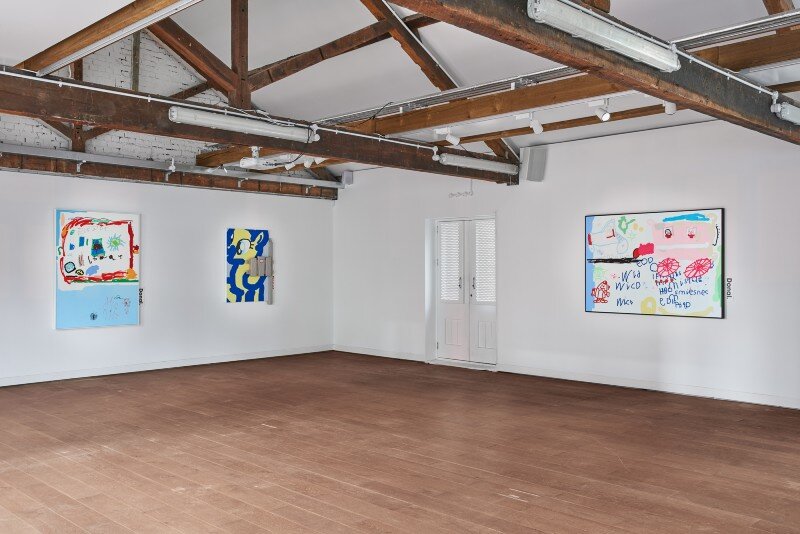
press release
Donal Sturt’s solo exhibition at Sarabande Foundation, curated by Tess Charnley, presented large-scale paintings and a sofa-den installation using his own childhood drawings as direct reference points. Sturt’s process transposes the simultaneously precious and disposable nature of children’s drawings into the elevated ‘art object,’ playing with the notion of branding in relation to art. He uses a commercial skillset to digitally design the compositions for his paintings, leaving room for spontaneous mark-making. The works are then rendered physically using acrylic, varnish, found plastic and house paint in such a way as to evoke the glossy finish of mass-produced children’s toys. Sturt celebrates the materiality of children’s drawing and the surfaces on which they draw, as well as the marks they make. The lines, folds, and hole punches on a sheet of paper are painted with the same emphasis as the drawing on the page. Mimicking the moulding of plastic with layers of gloss, Sturt nods to the conformity of mass-production while conceding to the impossibility of perfection in a painting practice. I do do it. engaged with the disparity between the freedom of children’s expression and adult inhibitions in their interactions with art, provoking nostalgia for those early years of childhood where art belongs to everyone.
The exhibition referenced Sturt’s research on the developmental processes of children's art and the work of psychologist Rhoda Kellogg in particular. Working extensively with children between the ages of two and six, Kellogg theorised that there are universal patterns and processes in children’s art, developing a classification system applicable to the graphic development of young children across the world. Although Sturt’s paintings are predominantly based on his own drawings from the 1990s, their universal quality illustrates Kellogg’s notion of a symbology of children’s drawing. In his painting of a parrot in Shiver me timbers.; a chariot/vehicle in edisptqjo. or a sun-like person in Lellow. we see our own hand. We relate to these images because we once drew them as well, and the children we know are probably drawing them now.
As a child can transform a stick into a sword with the plasticity of their imaginations, Sturt transforms hundreds of drawings (the paraphernalia of childhood) into Art. With this work, he asks what would happen if we treated children’s drawings with the same reverence that we treat adult art? Sturt converts the tactile nature of a crumpled sheet of paper, felt-tip bleeding through, to the untouchable, the highly glossed; his vivid palette leaving us wanting to touch the work more than perhaps the originals ever could. Mirroring the impossibility of a return to the freedom of childhood, these works entice the viewer with their familiarity but hold them at arms length. This dichotomy appears in Sturt’s installation, Castle, a new work which presents the ultimate architecture of childhood, the den, made impassable by our internalisation of etiquette around art and within the gallery space; a representation of our adult inhibitions. Just as we would not play in an installation or touch an artwork, many of us would not pick up a pencil, citing the phrase ‘I can't draw’ - a sentence indicative of the loss of childhood. Children don’t consider mark-making as optional, they just do it.
Donal Sturt is an autodidactic artist. His practice is informed by, and satirises, his background in graphic design and his experience in the commercial creative industry. He was previously Sarabande’s artist-in-residence, with a solo exhibition Now By Me in 2017. He also featured in the exhibition Training in 2018, a collaboration between himself and Andy Ogungbemile. Sturt runs drawing workshops with children which align with Kellogg’s ethos of allowing children to draw freely without adult direction or interference.
Sarabande: The Lee Alexander McQueen Foundation is the charitable foundation established by Lee Alexander McQueen to support the most exciting creative minds of the future. Not only a creative visionary, Lee passionately believed that future generations should be given the space, support and opportunity to create a successful practice, however they define that.
To date, Sarabande has nurtured and encouraged 70 artists and creators through subsidised studios and generous scholarships, plus supported tens of thousands more through a pioneering public programme of educational and inspirational events on-site.
Lee left the majority of his personal estate to Sarabande, and it is with his vision that the Foundation has become a leading organisation for Arts and Culture both in the UK and globally. It is an accelerator for the extraordinary talent working across the creative industries.